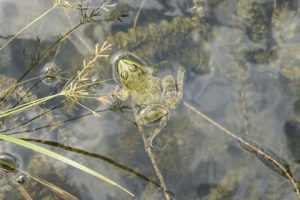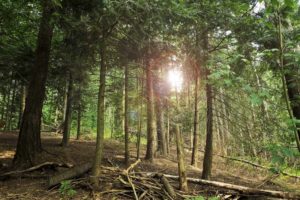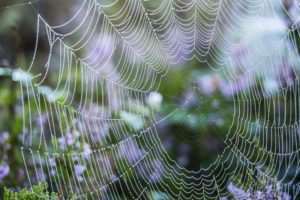
Nature Exploration Science Projects
Go on a Nature Scavenger Hunt!
Who doesn’t love a scavenger hunt? When done outdoors, scavenger hunts are a way to explore nature. Collect specimens, take pictures of animals, and do fun activities. This is a wonderful afternoon project for a group of kids, or expand it into a summer-long family project. Go to a nearby park, lake, pond, or beach. You can even scavenge in your backyard. Keep in mind that some places (such as certain national parks) don’t allow you to pick any wildflowers, and it’s illegal to collect feathers from certain species of birds, etc.
What You Need:
- Plastic bags – bring home specimens without making a mess.
- Jars – transport insects and other small critters, or carry rocks and shells.
- Camera – take pictures of what can’t be collected using a digital or disposable camera.
- Notebook, crayons, and colored pencils – draw and write about your scavenging adventure.
- Insect net – catch butterflies and other flying insects.
- Field guides – get help identifying trees, flowers, rocks, birds, etc. (Look for regional field guides in your local library and online)
- Sunscreen and bug repellent – don’t get burned and bitten.
- Baby wipes or hand sanitizer – clean up when you get grimy.
You can put all your supplies in a backpack so they are easy to carry. You may also want to bring a pair of binoculars if you have them, and a magnifying glass for studying insects, rocks, or leaves up close. Don’t forget to bring a water bottle and a snack – hunting can work up an appetite!
 What You Do:
What You Do:
You can use this worksheet as a scavenger hunt list of things to find. See how many of the fourteen objects on the list you can spot. Can you find a bird? Can you see any insects? How about different types of rocks and trees? If you’re near the ocean you may be able to find shells and seaweed. Using the worksheet, color the things you saw, and add your own drawings to the list for other things you saw. Below is a list of other things you can look for and activities for your nature exploration.
Things to See
- A spider web.
- Wildflowers.
- Mushrooms.
- Feathers or abandoned birds’ nests.
- Look carefully for something “camouflaged,” such as a walking stick insect or a moth that blends in with its surroundings.
Things to Collect
- Pinecones, dandelions, seeds.
- Ferns, moss, thorns, and other botanical specimens.
- Catch butterflies, capture a ladybug, dragonfly, or other insects, find a cocoon or chrysalis (see this article for butterfly-hatching instructions).
- Look for fossils, colored rocks, quartz, or flat skipping stones.
- If you live on the coast, include things like seashells, seaweed, small crustaceans, and small pieces of driftwood.
Things to Do
- Go wading.
- Make a leaf rubbing.
- Record a birdsong or other animal sounds.
- Look at a jar of pond water with a magnifying glass.
- Find animal tracks (if you have time, you can also make a plaster cast).
Things to Photograph
- Birds in a tree, or at a bird feeder or bird bath.
- Squirrels or other small animals.
- A sibling or friend doing one of the activities listed under “things to do.”
- Unusual sights like a tree root curled around a rock.
- The discovery (plant, animal, landscape) that amazed you the most.

What Happened?
If you were in the woods, why didn’t you find any shells? If you were by the shore, why weren’t there many plants, trees, or flowers? The type of animals that live on a beach wouldn’t live in the woods. Different environments or biomes have different kinds of rocks, trees, plants, and animals. The type of place you chose to go to on a scavenger hunt meant that you would only be able to spot certain objects on the list. You were probably able to spot lots of other things that weren’t on the list. When we look closely, we can discover a lot of fascinating things about the world around us. Nature exploration means learning that not all places are the same. Each place has a unique variety of living things, and every landscape is different.
 Nature Exploration Science Lesson
Nature Exploration Science Lesson
Where is the best place for exploring nature? You can start in your own backyard, looking carefully for hidden insects, or observing plants and rocks up close. The best place to go to explore nature depends on where you live. A nearby pond, lake, swamp, field, or wooded area would make an excellent spot for a nature scavenger hunt. If you live near an ocean or bay, try visiting the shoreline.
Exploring nature by going on a field trip, scavenger hunt, or simply a walk through the park is a great time to talk about biomes of the earth. A biome is a place that has a certain climate and temperature, and supports different kinds of plants and animals. Some biomes are hot and dry, like the African Savannah, which is home to elephants, cheetahs, and giraffes. The cold polar regions of the earth are called Tundra, and animals like snowy owls, arctic foxes, and caribou live there.
In most parts of North America there are temperate biomes. Temperate means that it is a mild climate – not extremely hot or extremely cold, but somewhere in between. There are wet and dry temperate biomes. Swamps and marshes are a type of temperate biome that are very wet. Forests are also a wet biome, where there is quite a lot of rain. Grasslands and prairies are another type of temperate biome, where in some seasons it is wet and others dry. Deserts are a type of dry biome in North America where there is very little water. In a desert it is hot during the day and cold at night.
When we step out of the city, we step into a natural biome or habitat full of plant and animal life. Which kind of biome do you think you live in, or what ones can be found in your state? If you live close to mountains, there may be many types of biomes there, such as grassland and forest. There is always an abundance of life where water and land meet, such as by a stream, river, or the ocean. Animals need food and water to survive just like we do. When you go out exploring nature think about the weather and how the sun and the rain help the trees and plants, as well as the animals that have their home there.
Printable Worksheet & PDF
Use this worksheet as a scavenger hunt list during your nature exploration activity.
To view a printable PDF version of this newsletter and the worksheet together, click the icon below.






